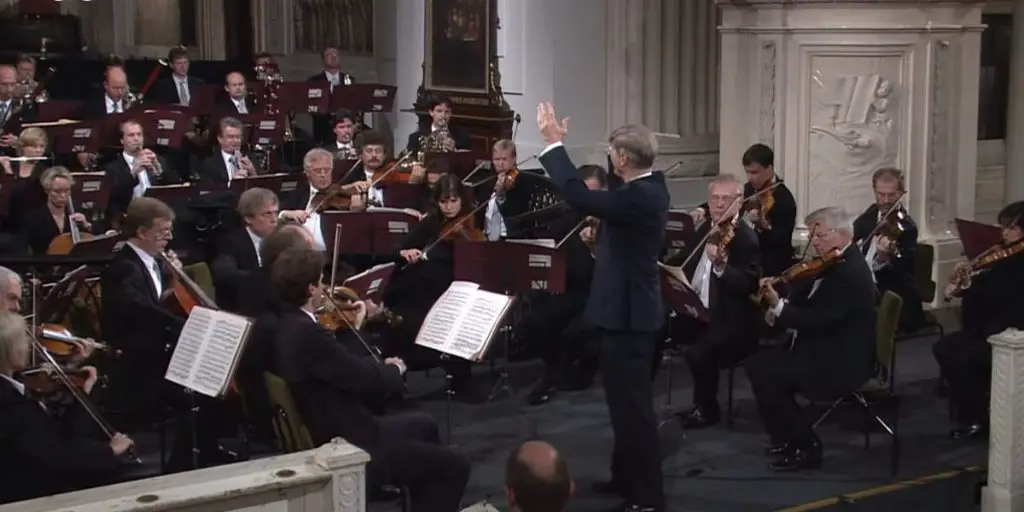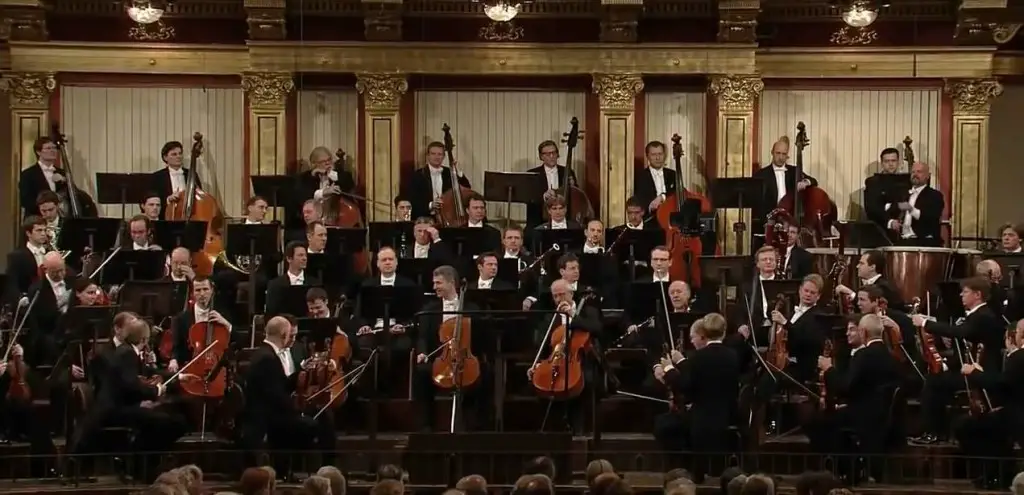Conducted by Herbert Blomstedt, the Gewandhausorchester Leipzig (Leipzig Gewandhaus Orchestra) performs Ludwig van Beethoven’s Symphony No. 5 in C minor, Op. 67.
Video published by the DW Classical Music channel.
It was the high point of Leipzig’s 10th-anniversary celebrations of German reunification: Ludwig van Beethoven’s Symphony No. 5 in C minor, Op. 67, performed by the Gewandhaus Orchestra Leipzig and conducted by Herbert Blomstedt. The commemorative concert was held in the St. Nicholas Church on October 9, 1999.
A pivotal moment in history occurred in Leipzig – the former GDR’s second-largest city – on October 9, 1989, when some 70,000 Leipzig residents overcame their fear of their authoritarian state to demonstrate their request for freedom and increased democracy. This ‘Monday demonstration’ as it would become known ran peacefully, despite mounting political tensions, and would become one of the events that led to the fall of the Berlin Wall on November 9, one month later.
The demonstrators’ rallying cry of “Wir sind das Volk!” (we are the people) was picked up again for this concert, where the fateful turn of history was commemorated with this performance of Beethoven’s Fifth, also known as his ‘Fateful Symphony’. It’s said to have received the additional epithet by way of a bon mot from the composer himself. Speaking of its four opening notes and their famous rhythm, Beethoven is reported to have said “Thus, fate knocks at the door!”
This interpretation by the Leipzig Gewandhaus Orchestra, conducted by Herbert Blomstedt, is positively ponderous in tempo, meaning one can listen intently to each twist and turn of Beethoven’s symphony. In commemoration of that crucial day in Leipzig so shortly before the shift in the tide of world politics, this artistic choice certainly works to underscore the slow turning of fate.
Ludwig van Beethoven’s Symphony No. 5 – The “Destiny Symphony”
Ludwig van Beethoven’s Symphony No. 5 in C minor, Op. 67, was written between 1804 and 1808. It is one of the best-known compositions in classical music and one of the most frequently played symphonies.
The symphony is rightly considered a natural continuation of Symphony No. 3, “Eroica” because it approaches the same themes and it expresses the relationship between particular and general.
The name under which it sometimes circulated, “The Symphony of Destiny”, is linked to the words of Anton Felix Schindler, his biographer, who, invoking an explanation given by the composer referring to the first bars in Part I of the fifth symphony, stated: “So pocht das Schicksal an die Pforte!” (That’s how destiny knocks on your door).
Significantly relevant is the chronicle written for this symphony at the January 1st, 1841 concert: “Beethoven’s symphony in C minor had closed the programme. Let us be silent! How often we hear it in public, but also in our deepest self, and how it projects its force upon all people of all ages, just like the great natural phenomena, which leave us in awe every time they appear. This symphony alike will still resound centuries to come, for as long as there will be man and music.”
Movements
There are four movements. With starting times in the video above:
- (00:00) I. Allegro con brio. The first movement is unique through its sonata structure and a theme constructed with a rhythmical-melodic cell of just four notes, which is also the key motif of the entire symphony. We must emphasize that the generating motif of this part also appeared in other works, either in the composer’s creation (sonata Appassionata) or in Mozart and Haydn’s works.
- (07:45) II. Andante con moto. The second movement it has a lyrical theme with a hymnal resonance, even festive, permanently reminding us of the somewhat dramatic tone of the first theme. The two thematic elements are the basis of the variational processes, at first lyrical and temperate, and ultimately expressing bliss.
- (17:49) III. Allegro. The third movement has a free form, neither scherzo nor intermezzo, but constitutes itself as an epilogue to the dramatism in Part I and a prologue to Part IV. This is considered to be the key moment of the entire symphony, both psychologically and from the point of view of the musical construction.
- (26:21) IV. Allegro. The finale of Beethoven’s Symphony No. 5 brings many new elements which constitute a genuine surprise. In the exuberance and joyfulness of the musical construction, a lyrical theme suddenly appears – an oboe that comes closer to a recollection, reminiscence. This segment takes a festive march theme expressing joy and absolute victory.
Gewandhausorchester Leipzig
The Leipzig Gewandhaus Orchestra is a German symphony orchestra based in Leipzig, Germany. The orchestra is named after the concert hall in which it is based, the Gewandhaus, which means the “Garment House” in English.

Sources
- Leipzig Gewandhaus Orchestra on Wikipedia
- Symphony No. 5 (Beethoven) on Wikipedia


